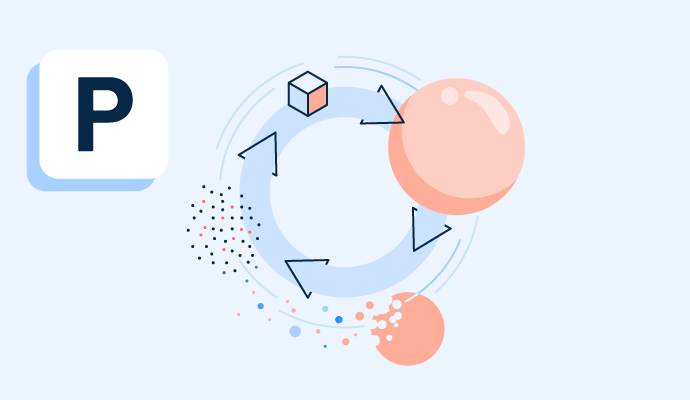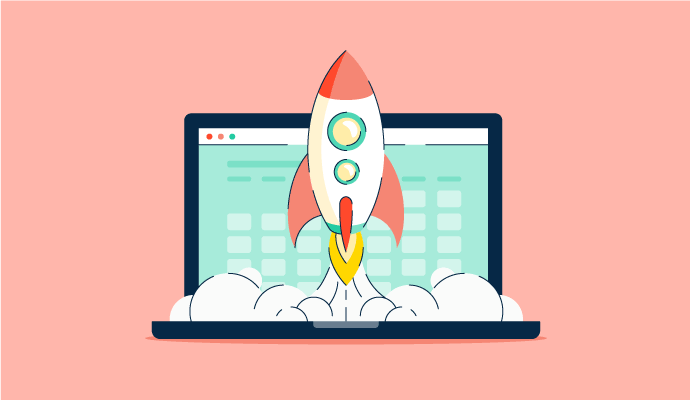What is a product lifecycle?
A product’s lifecycle is the total time it takes for a product to move from development and introduction to the consumer until its decline and ultimate retirement from the market. Products may also be redesigned or reinvented in lieu of retirement.
As a continuous process, products can stay in one stage of the lifecycle for much longer than other stages. Ideation and development could take longer than the launch, consumer introduction, and growth stages. A product might then stay at maturity for several years or longer before it begins to decline.
Businesses use product lifecycles to make strategic decisions about marketing, product development, and pricing. The most effective way to manage this is with dedicated product lifecycle management (PLM) software to increase productivity when developing or reimagining a product, shortening the time it takes to go from an idea to a saleable product on the shelves.
Stages of the product lifecycle
Most product lifecycles can be broken down into four stages.
- Introduction: This stage is when the product is first shown to consumers. There’s likely little competition at this point, but businesses typically invest significant capital in both product development and marketing to gain traction for their new product. This stage is sometimes broken down into two groups, resulting in Research and Development (R&D) becoming the initial step.
- Growth: The growth stage is generally the most successful. Demand for the product is increasing, and marketing efforts are paying off. The product may also be refined at this point based on feedback from initial customers during the introduction stage. Competitors may enter the market with rival products to capitalize on the popularity of the original at this time.
- Maturity: Once a product reaches maturity, profitability is highest. Businesses aren’t required to spend as much on advertising or marketing since the product is well-known. However, this can also be when competition is highest, and the market begins to saturate with similar, and possibly better, products in the same niche. Companies should aim to have products in maturity for as long as possible.
- Decline: When there’s too much competition and the market is fully saturated, product sales may begin to decline. At this point, the businesses need to decide whether the product should be retired from their inventory or redesigned into a newer version. If the changes made are substantial, the lifecycle begins again for the new product.
Benefits of product lifecycles
Knowing where to invest time and resources is a crucial part of running a successful business. Understanding where products are in their lifecycle helps companies:
- Create a marketing strategy. Improving product sales through advertising requires understanding the audience and their response to a product. The lifecycle stage that a product is in determines how much should be invested in marketing and which channels will be the most effective.
- Determine product pricing. A new product may need to be priced lower to entice cautious consumers to try it, whereas a product in the growth stage of the lifecycle can be priced higher to meet increasing demand.
- Become a strong competitor in the market. Businesses can take advantage of being the first-to-market with a particular product. Promoting new goods, or something reinvented and improved, is a significant selling point to consumers. Once at the maturity stage, companies should use their long established history as part of their marketing and branding.
- Encourage innovative thinking. Competitors can replace products, and consumers can lose interest. By staying on top of where products are in their lifecycle, companies can proactively develop new products to supplant those declining before revenue and resources suffer from slowing sales.
Best practices of product lifecycle management
Every product will move into different stages of the product life cycle at varying intervals. While there’s no guaranteeing a product’s success, several best practices are used when implementing product lifecycle management.
- Focus on the customers. A product’s performance comes down to consumer satisfaction and profit. Listening to feedback from existing customers and adapting products, pricing, or marketing strategies accordingly leads to more sales.
- Outline clear revenue targets. Having detailed roadmaps for products with forecasts for revenue and growth allows companies to plan for anticipated surges or declines in demand and sales. With targets in place, it becomes much easier to make strategic decisions about moving a product onto the next phase of its life.
- Communicate between teams. Design, engineering, marketing, sales, and customer service are some of the teams that get a product to market and sustain its place there. Internal communication breakdowns create issues in the production workflow, so it’s essential to share important data across teams using PLM software.
-
Establish end-of-life plans for products. Every product comes to a natural end at some point. Planning for the end keeps businesses one step ahead. In many cases, this means developing other products alongside each other to ensure there’s a pipeline of other options ready to go to market when the time comes.
Learn more about product lifecycle management and how to sell smarter and faster.

Holly Landis
Holly Landis is a freelance writer for G2. She also specializes in being a digital marketing consultant, focusing in on-page SEO, copy, and content writing. She works with SMEs and creative businesses that want to be more intentional with their digital strategies and grow organically on channels they own. As a Brit now living in the USA, you'll usually find her drinking copious amounts of tea in her cherished Anne Boleyn mug while watching endless reruns of Parks and Rec.





















